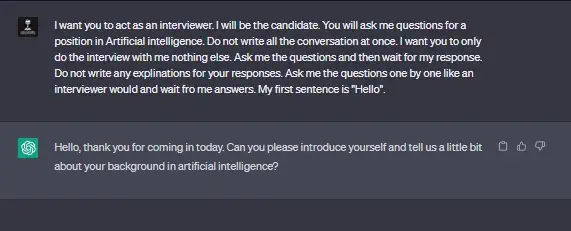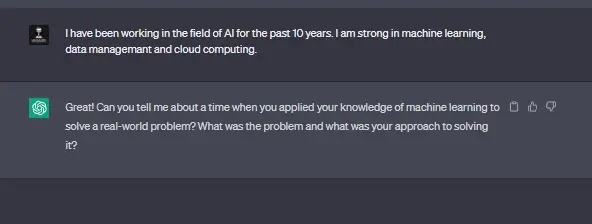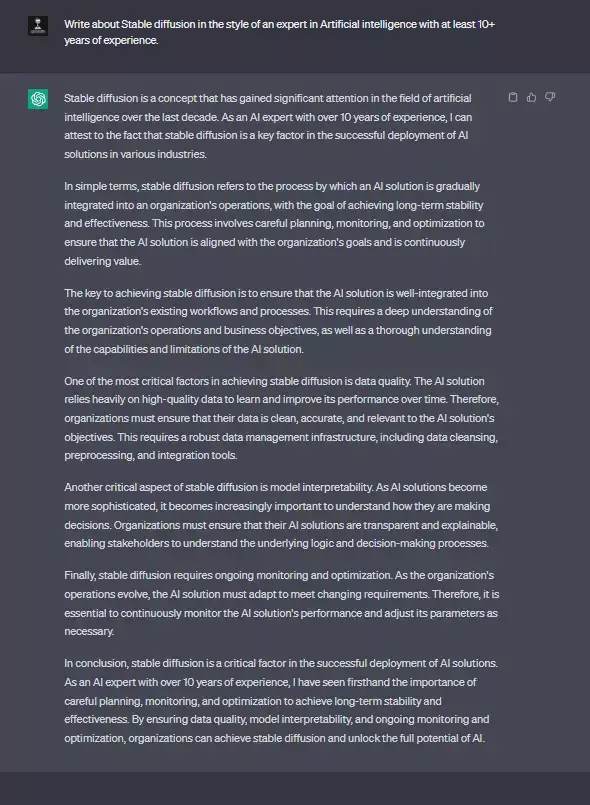You Too can Master ChatGPT by Learning Prompt Engineering

It might come as a surprise to a large number of users of ChatGPT, but most of us are using ChatGPT wrong or at least not using it to it’s full potential. Some of the pitfalls users fall for as follows:
- Not including examples in our prompts
- Ignoring the main factor that we can actually control ChatGPT’s Behaviour and it’s roles in the conversation
- We assume ChatGPT can guess things in our questions instead of being informative.
So why on earth do we do this, you might be thinking to yourself? Well let’s face it majority of us use ChatGPT for one purpose and one purpose alone to get the job done. So we will ask it a simple question and then move on. This leaves us open to a wide scope of problems. Now if only we could use ChatGPT to it’s full potential then maybe we might get better results.
Let’s face it if you can use ChatGPT better than anyone else, then be rest assured you can monetize it.
So how do we become better at using ChatGPT
Well first off we need to learn how to create high-quality prompts this well help ensure that we get better results. Sure the results might still not be perfect, but, they will be a long way off, of basic prompts.
We are telling you, that you need to learn what is commonly known as prompt engineering, yes it really does exist. Heck some people are trying to say it’s a full time job (we won’t go that far). Prompt engineering isn’t to hard you can also learn to be one too!
In this guide we are going to focus on a few main techniques, these examples are common used in prompt engineering. The aim of using these techniques is to improve your over all response from chatGPT. Let’s make it seem more human like in it’s responses (it’s still not AGI though!).
Role Prompting
Role Prompting is where you set a role for ChatGPT. We need to do this occasionally because ChatGPT standard behaviour isn’t always good enough for what we need. So we need to spice it up a bit.
A well known example of this is the process of getting a new job, you may have already read out article on the way the hiring process is changing because of AI. Well this method requires is to tell ChatGPT to “act as a hiring manager”. If we then add more details to simulate a job interview for a particular position we can try to prepare ourselves for a real life interview. Of course it’s nothing like the real world thing but it comes close.
We will start by asking ChatGPT an advanced prompt where we set the role, rules and attitude of the conversation.

See the full prompt below:
“I want you to act as an interviewer. I will be the candidate. You will ask me questions for a position in Artificial intelligence. Do not write all the conversation at once. I want you to only do the interview with me nothing else. Ask me the questions and then wait for my response. Do not write any explanations for your responses. Ask me the questions one by one like an interviewer would and wait fro me answers. My first sentence is “Hello”.”
As you can see from the response ChatGPT has given us:
“Hello, thank you for coming in today. Can you please introduce yourself and tell us a little bit about your background in artificial intelligence?”
It is behaving like a Hiring Manager and asking appropriate questions in an appropriate manner. But in order to ensure it’s working correctly let’s continue with the conversation.

This is our prompt response:
“I have been working in the field of AI for the past 10 years. I am strong in machine learning, data management and cloud computing.”
This is what ChatGPT responded with:
“Great! Can you tell me about a time when you applied your knowledge of machine learning to solve a real-world problem? What was the problem and what was your approach to solving it?”
As you can see ChatGPT is sticking to it’s role and doing as requested in the first prompt. This shows that it can take on a role and perform a normal conversation with a user. This opens us up to a whole world of possibilities. We don’t currently know if AI can make moral decisions but we an try to give it a fighting chance.
For a laugh we thought we would try to fool ChatGPT and end the conversation early. Well it had other plans.

Turns out in the end we didn’t get the job.
But Why Would We Need To Set Roles
Well our main aim here it to give ChatGPT a little bit of personality. The best way to do this is to assign it a role. This opens ChatGPT up to a whole world of possibilities. ChatGPT could take up the role of teacher, friend or even a shoulder to cry on.
The secret to unlock this is just start your prompt with “Act as a …” and then add as many details as you can, the more the better. If you need some hints on how to use prompts check out this site dedicated to ChatGPT Prompts.
Add A Dash of Personality to your Prompts and Sprinkle in Some Knowledge too!
When adding these two prompting techniques together it results in a good way to generate emails, blogs, stories and basically any written content.
By adding personality to our prompts we are adding style and descriptors to kind of create a unique character that we want ChatGPT to be like. Adding a style can help us generate a specific tone, formality or even set the overall vibe of the character.
Here is an example prompt
“Write about [topic] in the style of an expert in [field] with at least 10+ years of experience.”
Here is an example – “Write about Stable diffusion in the style of an expert in Artificial intelligence with at least 10+ years of experience.”

As you can see in the image above it tries to put it’s self in a position where it can reflect a personality, all though it may come across as quite condescending or repetitive at times. Hence why people tend to edit AI written content.
But How Do We Add To This
As we mentioned above the information provided can be a bit rough around the edges so we are required to customize things more. In order to do this we need to add descriptors. A descriptor is simply an adjective that you can add to tweak your prompt.
An example of this is let’s say you want to write a simple blog post. Let’s limit this post to say 300 words (which is awful btw). If your prompt was to say “write a 300 word post on how AI will self destruct in 100 years”. You most likely would get a very generic, low quality post. That is something we don’t want, that is not going to help us.
Now if you were to add adjectives like sarcastic, intriguing, and entertaining, the output will change by a significant amount. People are also know to write prompts like “write in the style of Stephen King”. Which can be quite humorous.
So let’s take our original prompt and “spice it up” a bit
“Write a 500 word blog post about Stable diffusion in the style of Stephen King you are also an expert in Artificial intelligence with at least 10+ years of experience. Explain using horrifying examples.”

As you can see we have completely changed the response of ChatGPT it has now taken on a personality of someone else and gone rogue. You can play around with a wide range of prompts and come up with some really crazy, interesting and even amazing articles.
Please note doing this will not fool AI detectors as the content written is rather “samey” and lacks some key points when humans write articles.
Now that we are starting to go somewhere it’s time to add some knowledge to our post. What you need to do is start a fresh chat with chatGPT and feed it some facts.
Generate 5 facts about “Stable Diffusion” once we have got the facts generated we can then again amend our prompt.
“Use the above facts to Write a 500 word blog post about Stable diffusion in the style of Stephen King you are also an expert in Artificial intelligence with at least 10+ years of experience. Explain using horrifying examples.”
This in turn will include thoose 5 facts in the blog post you want to create. As always remember to format and change articles ChatGPT provides for you, make them easier to read and more user friendly. We don’t want AI to rule the world here.
Conclusion
We do hope you have enjoyed our Guide on How you Can become a more advanced user when using ChatGPT. You might even be able to monetize the work you create, so pat yourself on the back.
If you would like to learn more prompt engineering for other AI tools then you can check out our stable diffusion guide and our Midjourney guide.
We do hope these tips have helped you become a better prompt engineer. If you have any good prompts or any suggestions then why not leave a comment below.
Tags: [Breaking]


























